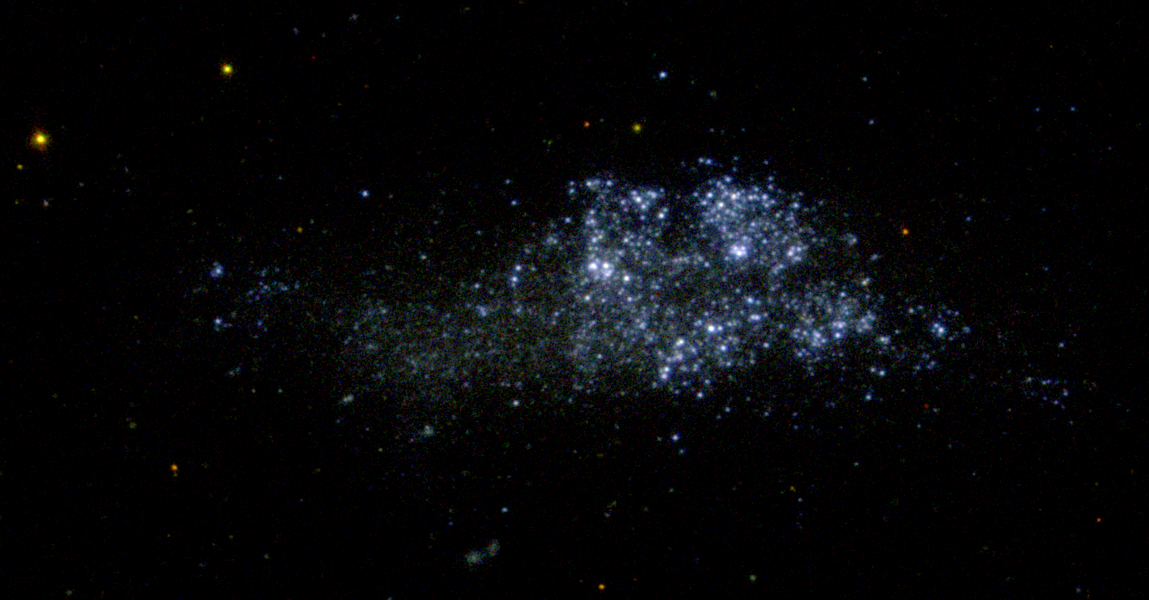
 Credit: Annapurni Subramaniam; AstroSat
Credit: Annapurni Subramaniam; AstroSat
Mysterious Star Factory
A strange dwarf galaxy exists at the outer reaches of the Local Group of galaxies, of which our own Milky Way is a member. The galaxy is called Wolf - Lundmark - Melotte (or WLM for short) for the three astronomers (Max Wolf, Knut Lundmark, and Philibert Jacques Melotte) who first studied it. It is an oddball which apparently underwent a burst of star formation some thirteen billion years ago, not long after the Universe itself burst into existence. Even though it's believed to be a member of the Local Group, it exists in near isolation and may never have interacted with any other Group members. The galaxy also has a very simple composition, containing very little iron or any of the other evolved chemicals that are cooked up by stars. The low mass of WLM also means that its a good target for dark matter searches. A new observation with India's AstroSat satellite observatory may help us understand the strange star formation history of WLM. The image above shows a beautiful ultraviolet image of WLM from AstroSat's Ultra Violet Imaging Telescope. The ultraviolet image of the galaxy highlights regions of massive, young, short-lived stars, which helps reveal the local conditions needed to form stars in this strange, lonely galaxy.
Published: October 9, 2017
<
HEA Dictionary ● Archive
● Search HEAPOW
● Other Languages
● HEAPOW on Facebook
● Download all Images
● Education ● HEAD
>

Each week the HEASARC
brings you new, exciting and beautiful images from X-ray and Gamma ray
astronomy. Check back each week and be sure to check out the HEAPOW archive!
Page Author: Dr. Michael F. Corcoran
Last modified Tuesday, 27-Feb-2024 10:06:54 EST


